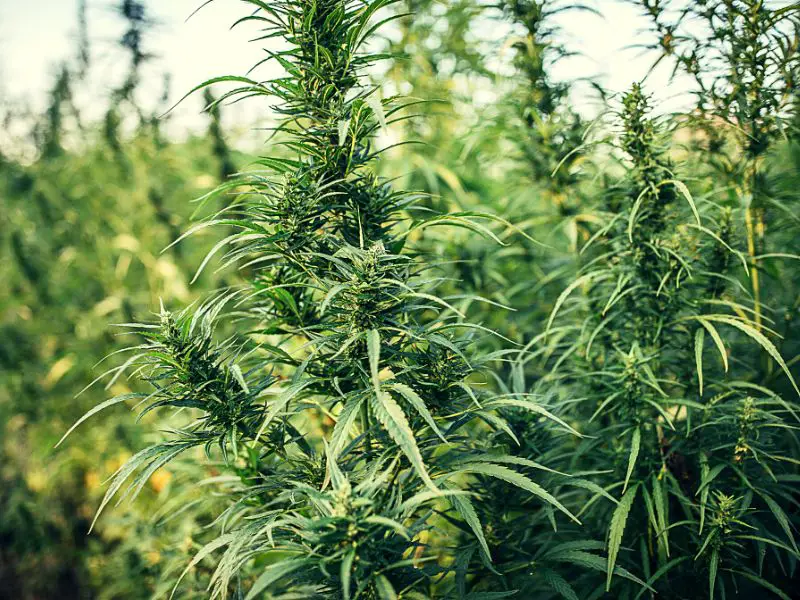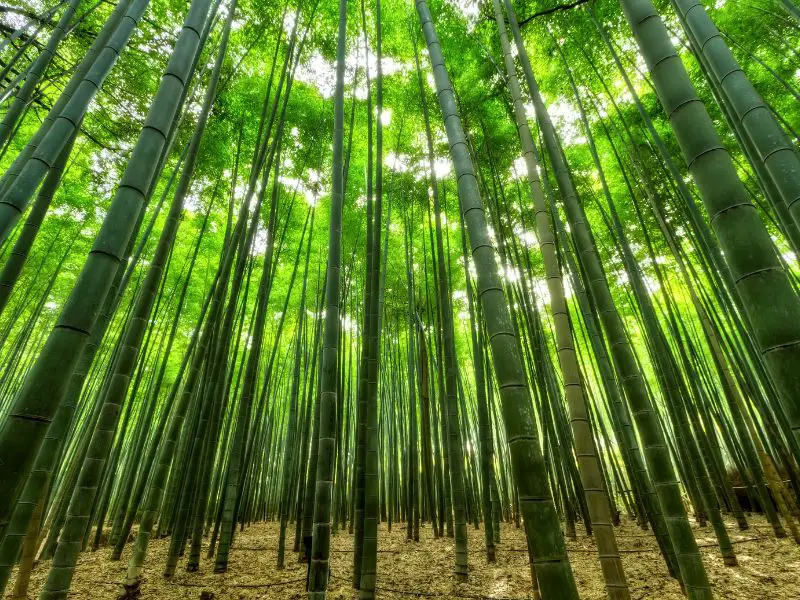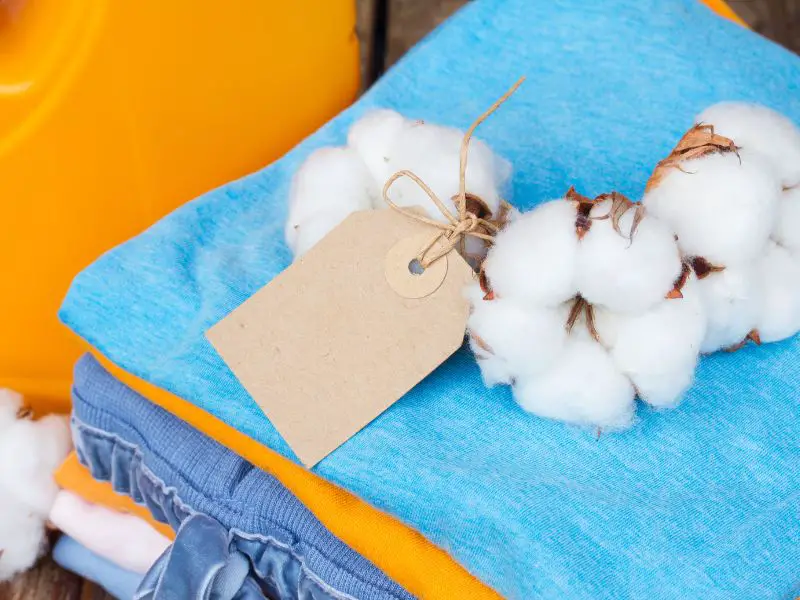Did you know that conventional fabric production accounts for 6.7% of global carbon emissions? That’s roughly 1.2 billion tons of CO2 a year just from fabric production. And those numbers don’t include transportation, which requires burning fossil fuels and contributes another 3% of carbon emissions.
By discovering who made your clothes, how they were made, and what they are made of, you can start making a little better choices for the planet. Here’s why you should go with eco fabrics:
Why Go For Eco Fabrics
The fabric used to produce your t-shirt or eco-friendly socks will influence how much environmental degradation it causes — or the measures that reverse it.
The fabric has a direct impact on raw material sourcing (farming and petroleum drilling impact), material processing (chemicals required to make it into fiber), and end-of-life possibilities (ways a garment may be disposed of), such as whether it can be recycled or composted.
The textile industry is responsible for 20 percent of the world’s energy consumption and the largest source of water pollution, as it accounts for 70 percent of wastewater. The textile industry is also one of the most significant contributors to greenhouse gases.

It consumes more fresh water than all other industries combined and emits more carbon dioxide than any other industry. That is about to change, though. You probably wouldn’t be wrong to think sustainable fashion starts with eco fabric.
Ecologically friendly fabrics are easy to find. And the brands who push its cause are staking their claim on a greener fashion future.
Here’s a quick rundown of the fabrics you’ll find in closets and how sustainable they are:
The Least Sustainable Fabrics
1. Polyester
Polyester is one of the most popular fabrics in clothing, bedding, and home furnishings. Polyester is made from petroleum and is also made from other chemicals and plastics, making it less sustainable than other fabrics. Polyester is notorious for contributing to plastic pollution, as plastic microfibers shed while washing clothing and get ingested into water systems. Polyester is also made from petrochemicals, making it non-biodegradable and non-recyclable.
2. Acrylic
Acrylic is a synthetic fabric produced from petroleum and is one of the least sustainable fabrics. It is cheap to produce, and because it is resistant to stains, it’s a popular choice for commercial clothing. However, the downsides of using acrylic are that it is somewhat flammable and is not breathable.
In addition, acrylic is difficult to recycle, and it may take up to two hundred years to biodegrade if buried in a landfill. In this respect, it is like its synthetic sibling, polyester. According to some estimates, Fibers from the use of synthetic clothes are thought to account for between 20 and 35 percent of all primary source microplastics found in marine environments,
3. Conventional Cotton
A pair of cotton jeans and a t-shirt need about 1931 liters of water and 6003 gallons of rainwater for irrigation. After that, the surplus water is tainted with various colors and chemicals. Because it is so expensive to dispose of these dangerous materials appropriately, many businesses contaminate the riverways to keep their products’ prices low.
Cotton has always been a favorite fabric for apparel and home furnishings. Still, its thirsty farming methods and the chemicals needed to treat the crop have been hurting the environment.
4. Nylon
The Nylon fabric has been widely used for many years. It is used in clothing, tarps, ropes, carpets, upholstery, and plastic products. While nylon might be one of the most durable fabrics available, it is also very harmful to the environment. Nylon production also produces large amounts of waste in the form of chemical runoff, and when dumped into natural waterways, the chemicals destroy marine life and harm plants.
The Most Sustainable Fabrics
1. Organic Hemp
Hemp fabric comes from actual hemp plants. It is durable and sustainable and is quickly becoming a more popular fabric choice among consumers worldwide. Hemp fabric is stronger, softer, and more durable than other fabrics. Hemp is also 100% organic and renewable, making it an eco-friendly fabric.
The plant itself is exceptionally tough and requires minimal water to thrive. In addition, it gives 60-70 percent of nutrients back to the soil where it lives! Plus, the process of spinning it into fabric requires no chemicals whatsoever.
As long as hemp is produced organically, without adding chemicals, it is deemed a very sustainable material. It becomes softer with each wash, which contributes to its comfort.

2. Organic-Linen
Linen, a natural fiber, has been used in fabrics for centuries. It is durable, breathable, and comfortable and is grown without chemicals. It is naturally hypoallergenic and antibacterial, which makes it an excellent choice for people with allergies or sensitive skin. It also doesn’t wrinkle easily, so linen clothing is easy to pack for trips.
Colors of linen fabric are created using a non-toxic dye, which acts as a dye fixative. As linen fabric is made from a renewable source, you can feel good about choosing this eco-friendly fabric. The flax plant is abundant, and the linen-making process is highly productive. It is an attractive option for local production and is highly sustainable as it biodegrades when left untreated.
3. Bamboo
Eco-friendly fabrics like bamboo are stronger and more resistant than their cotton counterpart. Although bamboo is more challenging to grow and harder to work with, it is a better material and much more environmentally friendly.
Most bamboo is produced using a process similar to rayon, which is pretty chemically and water-intensive. Although bamboo can be made more eco-friendly, such as using bamboo linen, these fabric variants are uncommon.

4. Organic Cotton
Organic cotton is a fabric made using only the natural fibers of cotton. Organic cotton is grown free from the use of pesticides and synthetic fertilizers. During the manufacturing process, only mechanical methods are used to improve the softness and quality of the cotton. Organic cotton is free from harmful chemicals such as bleaches, dyes, and pesticides.
Environmental benefits of organic cotton include reducing water consumption and air pollution, reducing soil depletion, and preventing water pollution. Organic cotton production also uses less energy due to mechanical processes. Some disadvantages of using organic cotton include higher production costs, lower yield, and difficulty meeting the demand for organic cotton.
GOTS Certification
The textile industry produces and consumes more chemicals than any other manufacturing sector. This includes synthetic dyes, pesticides, fertilizers, formaldehyde, nitrogen trifluoride, and benzene. Unfortunately, textile factories also release highly toxic wastewater and solid waste. If textiles are not produced sustainably, the chemicals released can devastate the environment and human health.
Thankfully, a program helps textile industry factories produce sustainable fabrics. The Global Organic Textile Standard (GOTS) is the world’s leading processing standard for textiles made from organic fibers. Fabrics are marked with the GOTS label to ensure consumers that they are made from 100% organic fibers, are eco-friendly, and were produced sustainably.
Choosing The Most Environmentally Friendly Fabric
When searching for the most environmentally friendly fabric, there are three things to look for.
The first is the fabric’s green credentials. This includes whether the fabric is produced using sustainable raw materials and is environmentally friendly throughout its life cycle. These include the chemicals used during the manufacturing process, whether the product is recyclable, and whether or not it uses renewable energy.
The second factor is the environmental impact of the fabric. This includes whether or not the material is made from natural fibers and the ecological impact of the fabric’s manufacturing process.
The third factor is the fabric’s performance. This refers to how the fabric can function, including how much weight it can support and how well it can insulate heat. In addition, this should include the effect of using the fabric’s products, such as how durable the fabric is.

Final Thoughts
Eco fabrics are fabrics made with organic materials and fibers derived from renewable resources. These fabrics are usually more expensive, but the environmental friendliness of the materials offsets the price difference. Although these fabrics tend to be pricier, there is a wide range of eco-friendly fabrics that you can purchase at various prices.
The main benefits of eco fabrics are that they are better for the environment than traditional fabrics and better for your health. Organic fibers are more breathable than non-organic fibers and contain fewer chemicals. The toxins in conventional fibers can irritate the skin and cause allergic reactions in some people.
Another significant benefit of purchasing fabric made from organic materials is that it helps protect animals. Animals are often killed to make conventional fabrics, such as cotton and wool. Organic textiles do not cause animal suffering during production or sale.
Related: Piñatex, How to Make Pineapple Leather, Vegan Leather Boots


1 thought on “Eco Fabric: Take a Step Towards a Greener World”